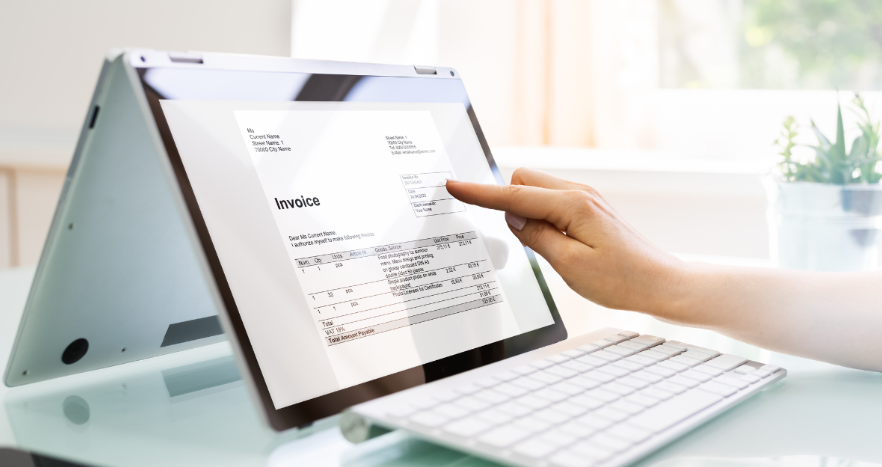Making strategic decisions in invoice processing is crucial to the effective management of companies’ finances. This process, which includes five key steps, has a significant impact on the smooth operation of the company. In this article, we will delve deeper into this issue, highlighting the importance of data analysis in the context of strategic decision-making. We will also discover practical aspects that may surprise even the most experienced entrepreneurs.
What is invoice processing?
The invoice is the basic document confirming the occurrence of a transaction. It documents, among others, the value and type of the transaction, as well as the parties who agreed. The invoice path, depending on the size and complexity of the organization, can be long and complicated. A regular invoice is sent to the secretariat, then to the approving persons, and then to the accounting department for approval. As we know, various situations may occur along the way that delay or stop the invoicing process.

Invoice processing is a key business function performed by the Accounts Payable (AP) department as part of invoice lifecycle management. This process includes several steps. Here are the five most important.
STEP 1: RECEIVING INVOICES
The process begins when invoices are received from suppliers, both in electronic and paper form. At this stage, it is crucial to accurately record all relevant details. These are invoice number, date, quantity, price, payment terms, and other taxes.
STEP 2: VERIFICATION AND MATCHING
The authenticity of the invoice is then critically verified. This process involves matching invoices to purchase orders, delivery notes, and contracts to ensure compliance with agreed-upon item and cost terms.
STEP 3: DATA ENTRY AND INTEGRATION
Approved invoices are entered into the accounting or invoice processing system. This enables them to be effectively managed and monitored.
STEP 4: APPROVAL
After initial verification, appropriate people in the organization deal with these invoices. Employees thoroughly verify and approve them before the next processing steps.
STEP 5: INVOICE PAYMENT PROCESSING
The payment schedule processes approved invoices through various payment methods, such as checks.
Invoice processing is a routine task, and they are the most susceptible to inattention errors. Thus, electronic document processing is a very effective way to improve the company’s accounting system. And analytics can be a great solution to help you make informed decisions in this process. Unlock advanced capabilities with an AI text analysis tool, specifically crafted for invoice processing. Learn how it streamlines decision-making in this context, ultimately improving the efficiency of your business processes.
Why do companies need analytics in invoice processing?
Analytics in invoice processing is vital for financial management in companies. Analyzing purchase and sales invoices allows for
- Optimizing payment terms
- Effectively managing funds to maximize financial benefits
- Identifying possible problems related to specific suppliers
Analytics allows you to accurately track processes and evaluate the performance of your AP team. It offers valuable insights into how well-automated invoice processing systems are working. Invoice analytics provides tools to generate reports and analyze financial performance. Thus, it supports the process of making data-driven decisions.
How to use decision-making for invoice processing
PROCESS AUTOMATION
Consider automating your invoice processing using OCR systems and other technologies. Automation can speed up the entire process, reduce the risk of errors, and minimize operational costs.
DATA SAFETY
Make sure your invoice-processing system meets the highest data security standards. Protecting the confidentiality of your financial and personal information is crucial.
INTEGRATION WITH EXISTING SYSTEMS
Integrate your invoice processing system with other systems used in your company, such as accounting systems or CRM (customer relationship management). This will allow for a smooth flow of information between different areas of the company.
DATA ANALYSIS
Use data analysis tools to gain insights into spending, trends, process efficiency, and other key metrics. Data analysis can help identify areas for optimization and improvement.
EXCEPTION MANAGEMENT
Configure the system to effectively manage exceptional situations. These may include data errors, outlier invoices, or the need for manual verification. Responding quickly to exceptions can minimize risk and reduce the time it takes to resolve issues.
PERFORMANCE MONITORING
Regularly evaluate the performance of your invoice processing process. Track metrics such as processing time, error rates, and handling costs. This will allow for continuous improvement of the process.
RISK MANAGEMENT
Consider implementing a risk management system to help identify, assess, and manage potential risks associated with invoice processing.
ADAPTATION TO LEGAL CHANGES
Be aware of changes in legal regulations regarding invoices. Make sure the system is flexible and easily adapts to new regulations.
STAFF TRAINING
Ensure appropriate training for staff responsible for processing invoices. Knowledge of tools and processes can contribute to efficiency and avoid errors.
REAL-TIME OPERATION
If possible, choose to process invoices in real time. This will allow you to respond faster to changes and have better control over your finances.
Conclusion
To summarize, effective management of invoice processing relies on
- Automation
- Data analysis
- Performance monitoring
- System integration
- Attention to data security
- Adaptation to legal changes
The introduction of these solutions supports making data-driven decisions, eliminates errors, optimizes costs, and speeds up the entire process.


